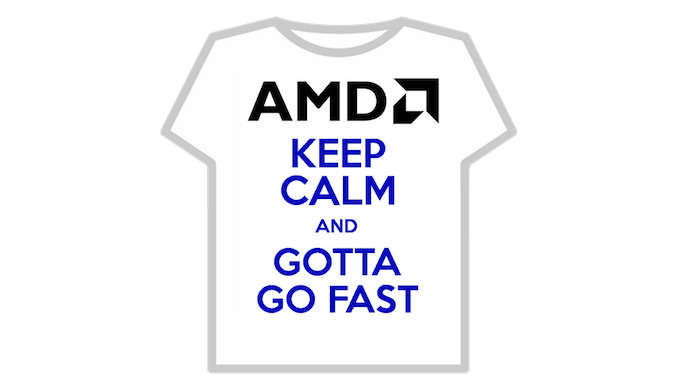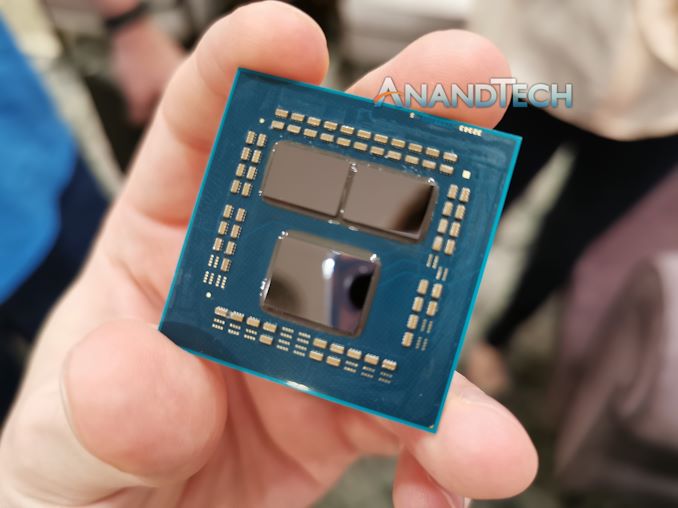Reaching for Turbo: Aligning Perception with AMD’s Frequency Metrics
by Dr. Ian Cutress on September 17, 2019 10:00 AM EST
For those that keep a close eye on consumer hardware, AMD recently has been involved in a minor uproar with some of its most vocal advocates about the newest Ryzen 3000 processors. Some users are reporting turbo frequencies much lower than advertised, and a number of conflicting AMD partner posts have generated a good deal of confusion. AMD has since posted an update identifying an issue and offering a fix, but part of all of this comes down to what turbo means and how AMD processors differ from Intel. We’ve been living on Intel’s definitions of perceived standards for over a decade, so it’s a hard nut to crack if everyone assumes there can be no deviation from what we’re used to. In this article, we’re diving at those perceived norms, to shed some light on how these processors work.
A Bit of Context
Since the launch of Zen 2 and the Ryzen 3000 series, depending on which media outlet you talk to, there has been a peak turbo issue with the new hardware. This turbo frequency issue has been permeating in the ecosystem since Zen 2 was launched, with popular outlets like Gamers Nexus noting that on certain chips, the advertised turbo frequency was only achieved under extreme cooling conditions. For other outlets, being within 50 MHz of the peak turbo frequency has been considered chip-to-chip variation, or a function of early beta firmware. A wide array of people put varying amounts of weight behind this, from conspiracy to not being bothered about it at all.
However, given recent articles by some press, as well as some excellent write-ups by Paul Alcorn over at Tom’s Hardware*, we saw that the assumed public definitions of processor performance actually differs from Intel to AMD. What we used as the default standard definitions, which are based on Intel’s definitions, are not the same under AMD, which is confusing everyone. No one likes a change to the status quo, and even with articles out there offering a great breakdown of what's going on, a lot of the general enthusiast base is still trying to catch up to all of the changes.
This confusion – and the turbo frequency discussion in general – were then brought to the fore of news in the beginning of September 2019. AMD, in a two week span, had several things happen essentially all at once.
- Popular YouTuber der8aur performed a public poll of frequency reporting that had AMD in a very bad light, with some users over 200 MHz down on turbo frequency,
- The company settled for $12.1m in a lawsuit about marketing Bulldozer CPUs,
- Intel made some seriously scathing remarks about AMD performance at a trade show,
- AMD’s Enterprise marketing being comically unaware of how its materials would be interpreted.
Combined with all of the drama that the computing industry can be known for – and the desire for an immediate explanation, even before the full facts were in – made for a historically bad week for AMD. Of course, we’ve reported on some of these issues, such as the lawsuit because they are interesting factoids to share. Others we ignored, such as (4) for a failure to see anything other than an honest mistake given how we know the individuals behind the issues, or the fact that we didn’t report on (3) because it just wasn’t worth drawing attention to it.
What has driven the discussion about peak turbo has come to head because of (1). Der8auer’s public poll, taken from a variety of users with different chips, different motherboards, different cooling solutions, different BIOS versions, still showed a real-world use case of fewer than 6% of 3900X users were able to achieve AMD’s advertised turbo frequency. Any way you slice it, without context, that number sounds bad.
Meanwhile, in between this data coming out and AMD’s eventual response, a couple of contextual discrepancies happened between AMD’s partner employees and experts in the field via forum posts. This greatly exacerbated the issue, particularly among the vocal members of the community. We’ll go into detail on those later.
AMD’s response, on September 10th, was a new version of its firmware, called AGESA 1003-ABBA. This was released along with blog post that detailed that a minor firmware issue was showing 25-50 MHz drop in turbo frequency was now fixed.
Naturally, that doesn’t help users who are down 300 MHz, but it does come down to how much the user understands how AMD’s hardware works. This article is designed to shed some light on the timeline here, as well as how to understand a few nuances of AMD's turbo tech, which are different to what the public has come to understand from Intel’s use of specific terms over the last decade.
*Paul’s articles on this topic are well worth a read:
Ryzen 3000, Not All Cores Are Created Equal
Investigating Intel’s Claims About Ryzen Reliability
Testing the Ryzen 3000 Boost BIOS Fix
This Article
In this article we will cover:
- Intel’s Definition of Turbo
- AMD’s Definition of Turbo
- Why AMD is Binning Differently to Intel, relating to Turbo and OC
- A Timeline of AMD’s Ryzen 3000 Turbo Reporting
- How to Even Detect Turbo Frequencies
- AMD's Fix











144 Comments
View All Comments
yannigr2 - Thursday, September 19, 2019 - link
"(3) because it just wasn’t worth drawing attention to it."Oh, no no, please do an article about this. A comparison with Intel's marketing slides from, lets say, 2013, when Intel had clearly the upper hand would be interesting.
eva02langley - Thursday, September 19, 2019 - link
You don't get it, Intel goal was to draw attention and sow confusion by spreading FUD to damage AMD momentum.Anandtech acted professionally in this matter and I salute them for it. I get your point that writting an article that could backfire on them would have its advantages, however it would just continue feeding this FUD thrown by Intel. It would just help Intel in the end to maintain the doubt that should not even exist in the beginning.
casperes1996 - Thursday, September 19, 2019 - link
Ah, yes. The Heisenberg Turbo-certainty principle at play.And of course not to mention the deeply philosophical quantum of a processor bursting but nobody noticing, did it even burst?
Jest aside, great, balanced article. Good to get misconceptions dealt with. I like AMD's approach to turbo. Only marketting could be argued it a negative I'd say. In general I think it's almost like we're going back to the frequency wars. Marketting should instead emphasis how little importance frequency has. And really it should almost be obvious to people, since pretty much everyone has tried upgrading their computer with a newer chip, experiencing a much greater difference than if frequency was the determining factor. Don't know about you lot, but I'd rather have a modern chip at 1GHz than (if it were possible) a Motorola 68K at 8GHz
AntonErtl - Saturday, September 21, 2019 - link
When I bought my first Intel CPU with Turbo (a Core i7-6700K), my expectation was that base was guaranteed, and Turbo is an unpredictable bonus in speed. So not everyone has the expectations that you claim everybody has because of experience with Intel. Later, my experience was that the base frequency means very little: With little load, the CPU clocks at some low frequency; with load, it clocks beyond the base frequency. And then there are things like the AVX offset, which seems to affect even my laptop's Core i3-3227U (which clocks at 1.7GHz instead of 1.9GHz when running matrix multiplication code), although AVX offset is not documented for this CPU.Back to AMD, in hindsight it might have been a better marketing strategy for AMD to announce the Ryzen 3000 CPUs with 100MHz less boost.
Concerning the article, I found the way strange in which the different approaches of Intel and AMD to deal with the limits of the hardware were portrayed. If I pay the same amount, and get the same stock performance, then I prefer a CPU with more headroom (for either overclocking or future degradation). If I pay the same amount and get the same overclocking performance (i.e., headroom), then yes, a CPU that uses more of that headroom is probably preferable (at least if it does not affect durability); but does the pricing of the CPUs actually reflect the headroom? In any case, for non-overclockers price/stock-performance and durability are relevant, and headroom is merely interesting.
lakedude - Saturday, September 21, 2019 - link
This per core binning is basically giving you a chip with ZERO headroom, none. Intel chips like the famous A300 cel have typically had great headroom with a few exceptions over the years. I applaud AMD's recent efforts but they are pushing their chips to the max and overstating their ability. This not guaranteed crap is for the birds. I'd be pissed if I had purchased a chip and it didn't get the full turbo that was advertised. If the chip can't hit a certain performance level with certainty then use more weasel words like "up to". As in "up to 4GHz turbo possible with some luck"Korguz - Saturday, September 21, 2019 - link
with that, intel cpus should also have on their boxes : at base clocks, our cpus use xx watts, but, in real world usage, and if you over clock, our chips can use 100 to 150 watts more.lakedude - Sunday, September 22, 2019 - link
Agreed, same type of thing with Intel's TDP. They blamed the motherboards, roll eyes.John_M - Saturday, September 21, 2019 - link
Thing is, AMD doesn't call it "Turbo". If tech journalists and reviewers called "Precision Boost" by its proper name there might be less confusion amongst the masses.lakedude - Sunday, September 22, 2019 - link
Precision Boost is more descriptive but the problem isn't so much with the name as the rating.Before reading this article I would have expected even the slowest core to be able to reach the advertised Boost speed. For example a AMD RYZEN 7 3700X 8-Core 3.6 GHz (4.4 GHz Max Boost) should be able to hit 4.4 GHz with each and every core and for longer than a few nano-seconds. Of course being unlocked OC frequencies beyond 4.4 GHz would not be assured.
Now both Intel (TDP) and AMD (Boost) are pushing the limits of their technology and their own terminology.
Good thing we have AnandTech!
Badelhas - Saturday, September 21, 2019 - link
This is an awesome article, this is why I love AnandTech. Thank you.